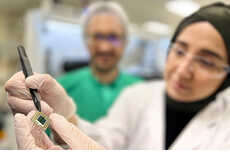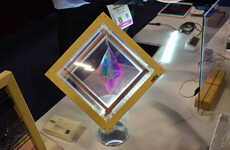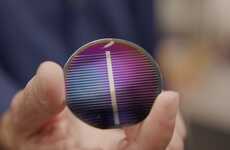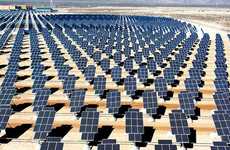
New Scientific Techniques From Stanford Result in Longer-Lasting Panels
Alyson Wyers — July 29, 2014 — Eco
References: osa.org & coolbusinessideas
Researchers from Stanford University developed self-cooling solar cells to make the sustainable energy source last longer. In addition to increasing longevity, this scientific development also means solar cells can be more powerful since staying cool is a key component to solar cell efficiency.
According to coolbusinessideas.com, this self-cooling technique involves incorporating conical and pyramid shapes "into the collector’s silica surface, bouncing hot infrared wavelengths away while letting in the visible light that generates the most energy." This means the solar panel doesn't fry itself by getting too hot, and the solar cell surface is being optimized.
While the Stanford team has yet to test the self-cooling solar cells outdoors, they are hopeful for the future and foresee commercial products.
According to coolbusinessideas.com, this self-cooling technique involves incorporating conical and pyramid shapes "into the collector’s silica surface, bouncing hot infrared wavelengths away while letting in the visible light that generates the most energy." This means the solar panel doesn't fry itself by getting too hot, and the solar cell surface is being optimized.
While the Stanford team has yet to test the self-cooling solar cells outdoors, they are hopeful for the future and foresee commercial products.
Trend Themes
1. Self-cooling Solar Cells - Advancements in self-cooling solar cell technology have brought increased efficiency, longer-lasting panels and have disruptive innovation opportunities for the renewable energy industry.
2. Infrared-wavelength Reflection - The ability to incorporate conical and pyramid shapes into solar collectors to bounce hot infrared wavelengths away while letting in visible light creates disruptive innovation opportunities in the solar and materials science industry.
3. Longevity and Efficiency - Increasing the lifespan of solar panels while simultaneously improving their efficiency offers disruptive innovation opportunities in the renewable energy industry that could change the way we approach sustainable energy.
Industry Implications
1. Renewable Energy - Self-cooling solar cell technology has the potential to disrupt the renewable energy industry by creating more efficient and longer-lasting solar panels.
2. Materials Science - Scientific advancements in infrared-wavelength reflection in solar cell collectors require extensive research and development, creating opportunities for further exploration and innovation in the materials science industry.
3. Manufacturing - The development of self-cooling solar cells means commercial production opportunities may be on the horizon, resulting in innovation and disruption within the manufacturing industry.
4.8
Score
Popularity
Activity
Freshness























